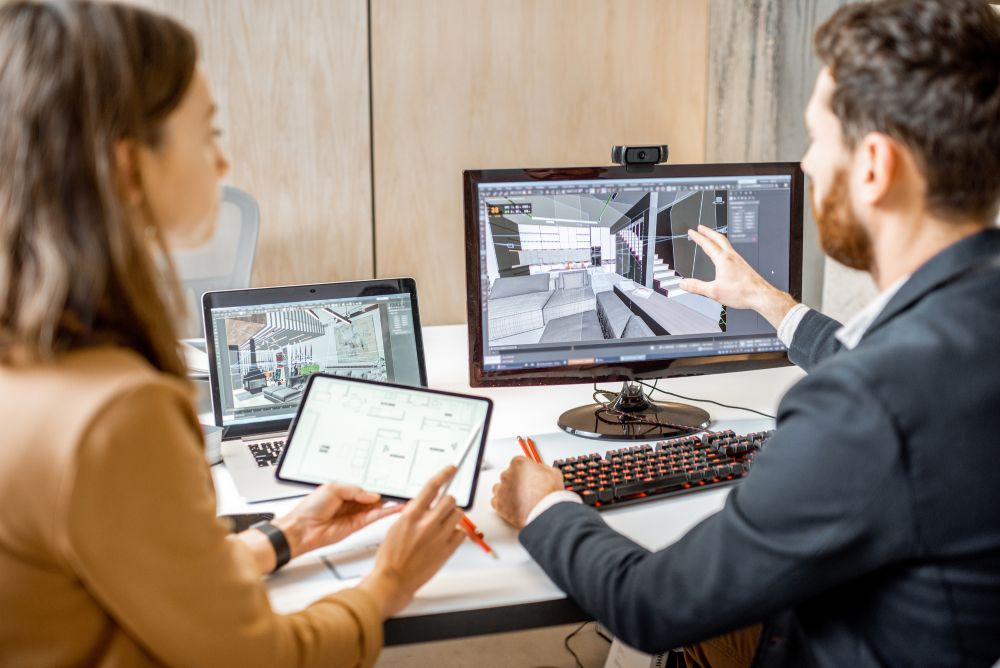3D modeling is seeing a major shift toward cloud computing, and developers are rushing to bring new products to the competitive market. Once restricted to powerful dedicated hardware, 3D modeling is now becoming the domain of efficient yet powerful web applications—and that means an expanded footprint for 3D modeling cloud software.
Demand for cloud computing is growing rapidly, especially for the 3D modeling sector. Research by McKinsey & Company indicates that 65% of businesses have already increased their budget for cloud computing, with 55% actively moving applications to the cloud.
3D modeling cloud software presents unique opportunities and challenges, including expanded productivity opportunities but also security concerns. Developers rely on the right 3D modeling software development toolkits to overcome these challenges and create innovative new applications.
These are some of the key facts you need to know about cloud-based 3D modeling software development today.
1. 3D Modeling Cloud Software: Challenges You’re Going to Face
Cloud 3D modeling software is still a maturing field, so developers face a variety of unique challenges.
Visualize Complex Data via the Web
Allow your users to view data from any device effortlessly
Learn More
One of the first challenges is to define the scope and activities of cloud modeling software. Developers must carefully weigh client expectations against the limitations and restrictions related to cloud environments compared to desktop software.
The technical design poses just as many challenges. Developers must define client and server responsibilities, understanding the available resources at each end. They must also balance this with network latency and response times.
Cloud-based 3D modeling solutions rely on various technologies to support functions at different steps throughout their workflows. Developers need to identify technologies that meet technical requirements, are compatible with their intended web application use, and are mature.
Along with technical and performance challenges, cloud software introduces additional considerations. Security is one of the most significant areas of concern, as the files and data involved are generally proprietary. You also need to avoid any data breaches or leaks.
Cloud solutions must also be scalable. Developers must ensure that their software and services can grow with demand. They can’t afford to have new issues develop during periods of growth.
2. Advantages and Disadvantages of Desktop and Cloud 3D Modeling Software
3D modeling cloud software provides many advantages over desktop software. However, it also has limitations. Developers should understand the appropriate applications of cloud and desktop software to prioritize the features they include in their 3D cloud software.
Cost reduction is one of the primary benefits of cloud software for clients. Instead of purchasing and maintaining the expensive hardware necessary for 3D design, stakeholders can access web applications through essentially any device.
This improved reach opens up opportunities to provide 3D resources to suppliers and buyers, increase collaboration, and maintain easy access to references in the field. It can also enable work-from-home arrangements without hardware acquisition costs.
3D modeling web applications can simplify use in many ways. They provide automatic updates, enable cross-platform functionality, and use fewer resources. However, they aren’t the right solution in every case.
In most cases, desktop applications provide access to a wider range of features. While there is a need for more investment in hardware, the benefits in terms of power and reduced latency are clear.
Developers should understand that cloud software and desktop applications are suited to unique uses. By doing so, they can develop cloud software that better addresses the needs of their clients.
Learn more about 3D visualization and modeling with these informational blogs:
3. Enabling 3D Visualization for Clients
One of the most useful implementations of 3D cloud software is enabling technical communication and collaboration through web applications. Hosting and sharing 3D models on the cloud lets clients and other partners access that data without dedicated hardware.
Web applications can allow for 3D visualization and light interaction through any device. This can be used in a variety of IoT applications, to preview files, and to share details and animations with third parties.
You can upload models to the cloud, where they undergo efficient compression. The client-side application then renders the visualization, providing access through standard desktop computers, mobile devices, or tablets instead of expensive dedicated 3D hardware.
4. Connect Desktop Applications to Cloud Software
Developers can also implement connectivity between desktop applications and their cloud software to provide access to a range of features. This can enable easier access to post-processing, optimization, translation, and other resource-intensive features.
With these kinds of features, developers can allow for new business models. Light 3D modeling applications can include paid add-ons that expand their capabilities. Developers can reach a wider audience with both attractive pricing and access to expanded features.
Start Developing Cloud-Based 3D Modeling Now
Maximize the lifespan of your 3D modeling software and unlock value for users.
Find Out How
Desktop or web applications can communicate with the web service to access a range of server-side features. Interoperability, 3D modelers, meshers, solvers, and other operations are handled server-side, reducing the need for resources on the client side.
5. Hard-Coded Workflows for 3D Applications
The use of 3D modeling cloud software makes it possible to offload a variety of custom back-end workflows to the server side. The server side handles the workflows themselves, providing visualized results on the client side.
These types of features have a range of potential applications. Manufacturing platforms and marketplaces can take advantage of them to improve functionality. Various types of simulations with high computing power needs can also benefit.
These back-end workflows can also facilitate data preparation, making those functions more accessible through a wider range of devices. These 3D cloud and mobile solutions can greatly improve the speed of many different workflows.
The implementation of hard-coded workflows for 3D applications involves the submission of parts or parameters from the client side to the server side. The cloud can carry out a range of analysis and modeling functions and then return the results for rendering on the client side.

Source: DepositPhotos
6. Light 3D Web Applications
Developers can provide many features to their clients through light 3D applications. These provide a more flexible range of features, including interactivity. They can be an affordable solution in applications where latency isn’t a major concern.
Providing a light version of a desktop application or another platform is one use of this type of application. Implementation requires geometry configuration, geometry interaction, and applets for commands on the client side and rendering the results on the client side.
7. Advanced 3D Web Applications
The demand for powerful 3D modeling cloud solutions continues to grow. Developers can meet this demand with advanced 3D web applications that deliver higher performance, most closely meeting the standards set by desktop solutions.
These applications require both high interactivity and low latency. Client-side functionality, including kinematics, undo/redo, AR/VR compatibility, collaboration, and advanced UI, are all key features of advanced 3D modeling cloud applications.
Delivering these features represents a considerable challenge for developers. They need the right tools and partners to meet the technical and design challenges of developing applications at the cutting edge of 3D modeling cloud software.
Streamline Development of Your Cloud-Based 3D Modeling Software
Demand for 3D modeling software is growing rapidly, with Verified Market Research forecasting 6% annual growth over the next five years. Much of that demand is being driven by the need for new 3D cloud modeling software, and now is the time for developers to act.
Your team can streamline development and bring innovative new products to market faster with SDKs, professional services, support, and tools from Spatial. Gain access to robust 3D modeling solutions and start building a lifetime partnership by reaching out today.
Feature Image Source: DepositPhotos

